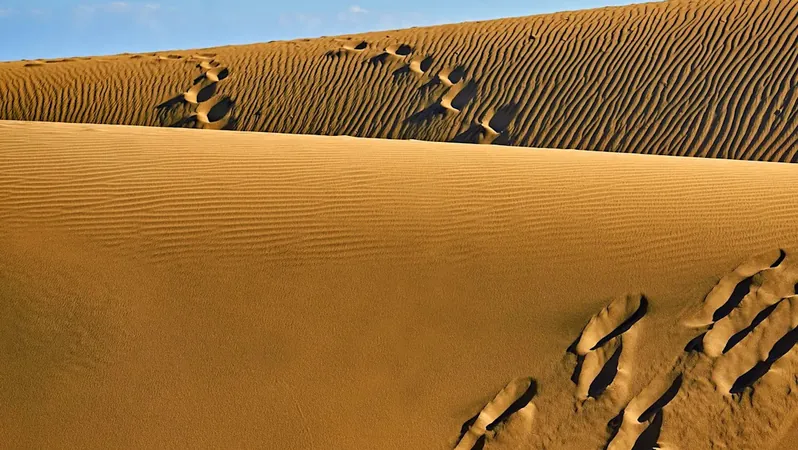
Ancient Mummies Uncover Surprising DNA Secrets from Sahara's Past
2025-09-21
Author: Ting
Unveiling the Past: 7,000-Year-Old Mummies Discovered
Archaeologists have made a groundbreaking discovery in the Sahara Desert: the remains of two 7,000-year-old female mummies, unearthed from the Takarkori rock shelter. These ancient herders belonged to a lineage that defies previous genetic expectations, showing no DNA link to modern Sub-Saharan populations.
The Green Sahara: A Forgotten Oasis
Imagine a time when the Sahara was not a barren wasteland, but a lush, green expanse teeming with life. This was the reality during the African Humid Period, from 14,800 to 5,500 years ago, when the region supported fertile lands and burgeoning human settlements. But amidst this vibrant landscape existed an enigmatic group of people whose genetic heritage starkly diverges from what we know of Sub-Saharan ancestry.
Revolutionary Findings from the DNA Analysis
Led by renowned archaeogeneticist Nada Salem from the Max Planck Institute, the research team conducted a detailed DNA analysis of the naturally preserved mummies. The findings revealed that the Takarkori individuals are closely related to ancient North African peoples, diverging from Sub-Saharan DNA at a critical point in history.
Genetic Mysteries: Connections to Ancient Foragers
Intriguingly, these mummies share a genetic relationship with 15,000-year-old foragers discovered in Taforalt Cave, Morocco. Their genetic makeup indicates minimal interaction with Sub-Saharan groups, challenging prior beliefs that migrations facilitated the spread of farming practices.
Cultural Diffusion Over Genetic Mixing?
The research suggests a different model for how pastoralism spread through North Africa, emphasizing cultural exchange rather than genetic intermingling. The Takarkori likely inherited their traits from a prehistoric hunter-gatherer community that thrived before widespread agriculture.
Environmental Isolation: The Key to Their Survival
The diverse environments of the Green Sahara, with its lakes, woodlands, and mountains, likely served as barriers that kept these populations isolated from one another. This isolation helped preserve their unique genetic lineage, making their discovery all the more significant.
The Search Continues: Hidden Histories Await
What other secrets lie buried beneath the shifting sands of the Sahara? The discovery of these mummies raises more questions than answers and ignites curiosity about the ancient world that flourished before the desert's desolation. As researchers continue their quest, we may soon learn more about this forgotten chapter of human history.



 Brasil (PT)
Brasil (PT)
 Canada (EN)
Canada (EN)
 Chile (ES)
Chile (ES)
 Česko (CS)
Česko (CS)
 대한민국 (KO)
대한민국 (KO)
 España (ES)
España (ES)
 France (FR)
France (FR)
 Hong Kong (EN)
Hong Kong (EN)
 Italia (IT)
Italia (IT)
 日本 (JA)
日本 (JA)
 Magyarország (HU)
Magyarország (HU)
 Norge (NO)
Norge (NO)
 Polska (PL)
Polska (PL)
 Schweiz (DE)
Schweiz (DE)
 Singapore (EN)
Singapore (EN)
 Sverige (SV)
Sverige (SV)
 Suomi (FI)
Suomi (FI)
 Türkiye (TR)
Türkiye (TR)
 الإمارات العربية المتحدة (AR)
الإمارات العربية المتحدة (AR)